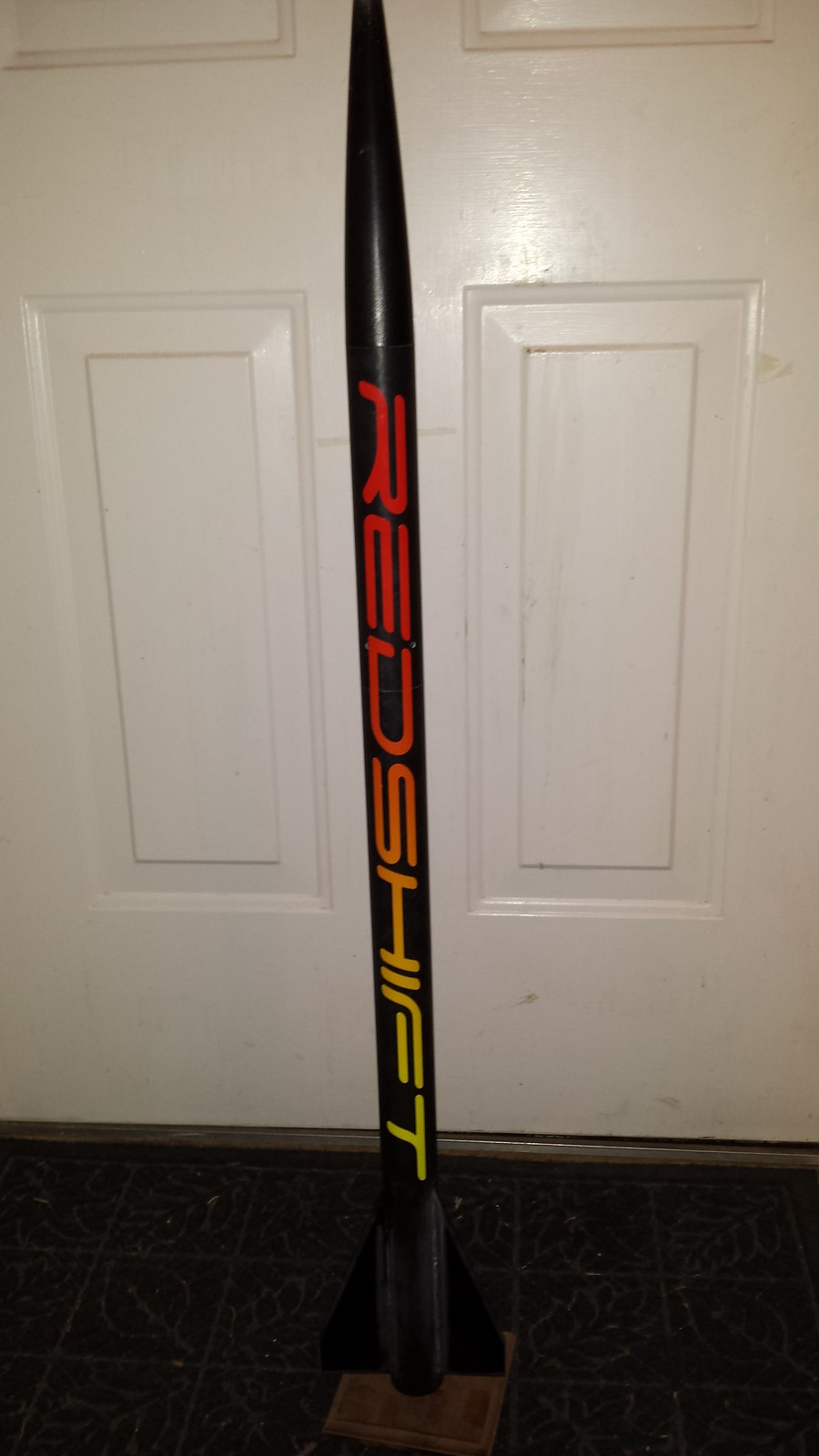Alright, how about a little update. Redshift is now officially 100% finished. WooHoo!
I masked for the yellow fin tips with 3M scotch blue tape, then sprayed grey primer, and then 2 lightish coats of Rusto yellow. Turned out pretty well, but I should have used white primer. Yellow over grey over black doesn't cover all that well...
Tada! It's not a great picture, I'll see if I can get a better one soon.

Shock cord attachment point:


I mounted it by measuring where the ring would sit, smeared epoxy about 1/4" inside of that. Then I placed the ring in the tube, and used a carefully marked coupler to push it into position. (and then quickly pulled it out!). It worked very very well.
I did some sanding for the coupler fit, and this thing is done. I've decided on a 15" chute for the first flight, but I'm guessing I'll decide to step it up to 18" for subsequent flights, especially those to mid-range altitudes with heavier motor cases. I'll also be using a 4X40 streamer for the drogue, which I'll be getting soon. If need be I'll use a smaller one though. Test packing the chute, nomex, and a tracker stand-in was all very easy, and with all the newfound room in the NC, I've get room to spare in the payload section.
And, the all important weight......
..........19.5oz ready to go, parachute and all! Not bad, I think. That's only about 3-4oz heavier than my Shape Shifter mini
without the recovery gear.
First flight will be on Sunday with the previously planned G339N. I will be using Bill Cook's "Mayhem Rocketry" Fly Away Rail Guides. I have very high hopes, and a full flight report will be here Sunday or Monday. OR is saying about 2300ft, but I don't think It'll be quite that high. It'll be off the rail in .09s, traveling at 85mph, and pulling 50Gs :grin: I'm very eager to fly this thing.
Two question; Has anyone had any issues flying the RRC2+ in rather high acceleration flights? Any tips to ensure my charges don't disassemble themselves prematurely?
Nate















